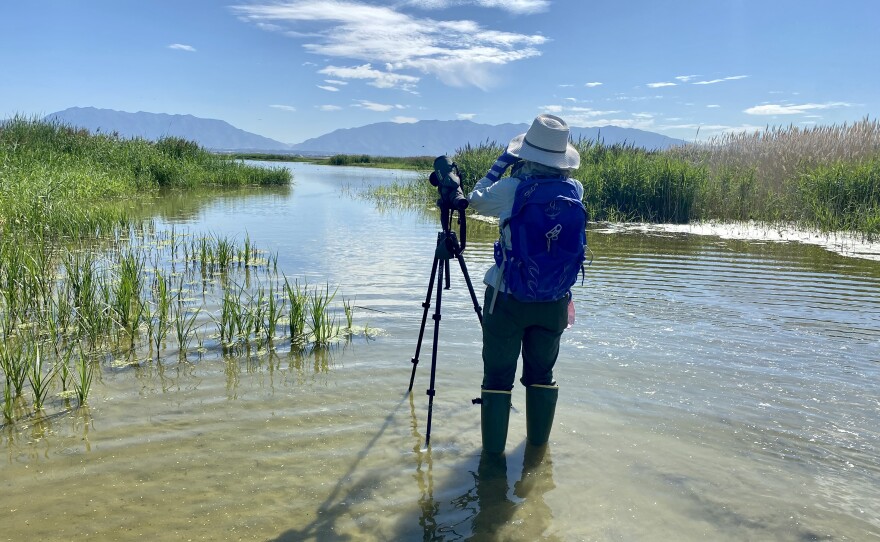This past August, the National Audubon Society, Utah Division of Wildlife Resources, Sageland Collaborative, Point Blue Conservation, Tracy Aviary, and the US Fish and Wildlife Service all came together to conduct their biannual migratory shorebird survey. Agencies conducted similar surveys back in the late 1980s, and recent environmental shifts have made monitoring populations ever more critical.
Max Malmquist is the engagement manager for National Audubon’s Saline Lakes Program and has played a major role in the resurgence of these surveys.
“The goal of this program is to survey all these wetland sites during shorebird migration for the next, hopefully we get five years worth of data to help us understand how the distribution of the shorebirds has changed, what are the sites that are still important,” explained Malmquist.
This most recent survey brought volunteers to sites across the Intermountain West to count shorebirds as they begin their fall migrations south. UPR joined two other volunteers at a Great Salt Lake wetland site where we traipsed through 12-18 inches of water and stands of phragmites for six miles, frequently stopping to count black-necked stilts, snowy plovers, killdeer, a few sandhill cranes, Wilson’s phalaropes and American avocets, among others.
Great Salt Lake hosts the largest number of migratory birds of any water body in the Intermountain West. Malmquist emphasized the importance of the lake to migrating birds.
“We counted 295,000 shorebirds in Utah. And 293,000 of those, of course, were at Great Salt Lake. Across the region, it looks like we're going to have somewhere around 650,000 shorebirds,” Malmquist reported.
While these numbers are in line with historical surveys, they did observe some changes in specific species abundance. Black-necked stilts and American avocet numbers were down considerably, whereas phalarope populations increased by nearly 300% since the 1980s.
Malmquist hopes that future surveys will encompass years of not just extreme dry and then extreme wet, as has been seen in the past two years. Those surveys could give greater insight into migratory shorebird use of space in the Intermountain West and potential threats to migration.
“With population growth and water diversions and climate change, the amount of surface water and wetland habitat across the West has changed dramatically. And I think it's really important for us to understand how habitats have changed and how shorebird distribution and populations have changed," Malmquist said.
For more on the shorebird surveys listen to the spring shorebird story or visit sagelandcollaborative.org.






